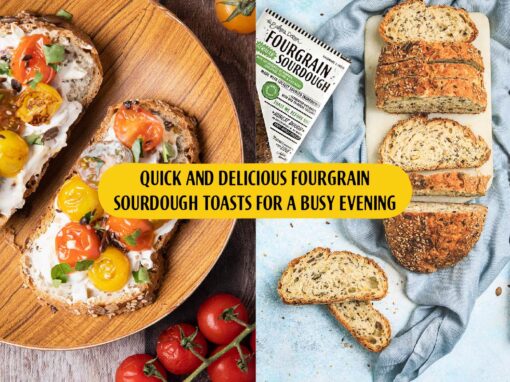Have you come across some sourdough bread terms and not understood them? Don’t worry, here is basic Sourdough Glossary to explain you terms most widely used with Sourdough baking-
YEAST
A sourdough starter contains multiple strains of wild yeast captured from flour, environment and even the baker’s own hands! The yeast contained in a sourdough starter is very different from commercial yeast. I’ve written a full guide to the yeast in a sourdough starter here.
ACTIVATION
Activation can refer to activating a dried starter that has been either gifted, purchased or just stored for later use.
It can also refer to feeding your sourdough starter in order to “activate” it ready for baking.
BAKER’S PERCENTAGES
Baker’s percentages are a little different to the percentages you might be used to. When talking about baker’s percentages, flour is always 100% and all other ingredients are a percentage of that.
Baker’s percentages make scaling a recipe up or down very easy.
BAKING TIMELINE
Baking timeline refers to the schedule you follow as you prepare and bake sourdough bread.
Because sourdough relies on wild yeasts and natural fermentation, the baking timeline or schedule is a lot longer than yeasted breads.
PRE FERMENT
A pre-ferment is a portion of dough that is made hours before so that it can ferment. The pre ferment is then added to the dough. It adds a deeper flavor.
Preferments can be made using sourdough starter, levain or commercial yeast.
BULK FERMENT
This is the part in the sourdough process where all the magic happens. It’s where your dough does the majority of its fermentation.
It’s called bulk fermentation because the dough ferments as one “bulk” mass before being divided and shaped.
PROOFING
Proofing is often used interchangeably with fermenting however they do not mean the same thing. Proofing refers to the “second” period of fermentation after shaping the dough.
DEGAS
To degas means to push all the air and gas bubbles out, flattening the dough. Degassing is a process associated with sandwich breads – but you don’t want to degas traditional sourdough bread as you will lose the beautiful open crumb.
BENCH REST
Bench rest refers to allowing the dough to rest and the gluten to relax. Dough is usually laid directly onto the kitchen counter or “bench” for this. Dough can have bench rest after pre shaping for example. The dough relaxes and is then ready for shaping.
STRETCH AND FOLD
This is a method of moving the dough around in such a way that it strengthens the dough and develops the gluten in the dough. Stretching and folding is done in place of kneading the dough. You basically stretch the dough out and then fold it over itself. You do 4 stretch and folds per set by working your way around the dough in a clockwise direction.
SOURDOUGH SHAPING
Shaping refers to the part of the sourdough process after the bulk fermentation where you shape your fermented dough into the type of loaf you desire.
Shaping can take practice and requires some skills to get right. A silicone and stainless steel dough scraper can be handy tools when you are shaping sourdough.
SCORING
Also referred to as slashing, scoring refers to making cuts in the dough to control where the dough will open up.
Scoring can be simple, with just one very deliberate slash across the surface of the dough or it can be decorative like the dough pictured below.
HYDRATION
Hydration refers to the amount of water in your dough or how hydrated it is.
You can work out the hydration of a loaf by dividing the amount of water by the amount of flour then multiplying by 100. This will give you the percentage of hydration.
Lower hydration doughs tend to be easier to work with (around 50 – 70%). Anything above 80% is considered high hydration and can be more difficult – but not always.
POKE TEST
This test refers to testing whether your bread has fermented sufficiently and is ready to bake. Basically you follow the rules below:
Under proofed – you push your finger on the dough and it springs back very quickly, filling the indent.
Over proofed – you push your finger on the dough and it leaves an indent that does not fill back up.
Perfectly Proofed – you push your finger on the dough and it leaves an indent that slowly starts to fill back in, but not fully.
As you develop your “sourdough instincts” you’ll start to get a feel for the dough and when it’s ready to go!
ALVEOLI
Alveoli is a bread term that refers to the gas bubbles or pockets in the crumb of your bread. Many sourdough bakers strive for large alveoli in their bread, however this is not always the case. Large alveoli can be achieved by getting the right combination of fermentation, time and temperature.
CRUMB
Crumb this refers to the inside of the bread and the texture that it has when you cut it open. You’ll hear people refer to it as open crumb or tight or closed crumb.
BANNETON
A banneton is basically a shaping container used to ensure the dough retains it’s shape during the cold retard.
Bannetons are made from rattan or cane and need to be floured to ensure the dough does not stick. Rice flour is best for this.
You’ll find a banneton sizing guide here and a guide to preparing, using, maintaining and storing them here.
COUCHE
Couche refers to a piece of heavy linen fabric used to support shaped loaves in their final proofing. It is most often used for baguettes.
DUTCH OVEN
A vessel in which to cook sourdough. Dutch ovens are generally heavy based, cast iron pots with lids.
Dutch ovens can be used to cook a variety of foods but they have become popular for sourdough baking because of their ability to trap steam and give the bread superior oven spring.





